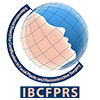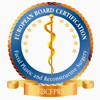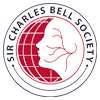Aesthetic and functional problems can sometimes be corrected with surgical interventions. The most important of these surgical methods is the Free Functional Muscle Flap. The Free Functional Muscle Flap is an advanced microsurgical technique used to restore muscle functions. This method is generally preferred to restore muscle functions lost as a result of facial paralysis, congenital anomalies, nerve damage or trauma. If you want to learn more about this flawless procedure, you can take a look at our content.
Free Functional Muscle Transplant in One Stage – How Is It Performed?
Single-Stage Free Functional Muscle Transplantation is an advanced microsurgical method used to restore lost muscle functions, especially in cases such as facial paralysis. In this procedure, a healthy muscle taken from another part of the body is transplanted to the damaged area along with its nerve and vascular connections, and this area is restored to function. The gracilis muscle, usually taken from the thigh, is preferred for functional transplantation. Because it is both thin and has a structure compatible with nerves and vessels. In this context, the transplanted muscle is combined with the nerves and vessels in the target area with microsurgical techniques, and the muscle is re-perfused and functional through nerve connections.
Being a single-stage technique allows both nerve transfer and muscle transplantation to be performed in the same session. Thus, it accelerates the healing process and requires less surgical intervention.
What Is The Difference Between Using One-Stage And Two-Stage Techniques?
One-stage and two-stage techniques are methods used in surgical procedures such as free functional muscle transplantation, and there are important differences between these techniques in terms of procedure order, application process and healing dynamics. At this point, the single-stage technique provides a faster recovery process and less surgical intervention, while the two-stage technique offers a comprehensive solution for more complex cases. Therefore, the technique to be used is determined by the patient's condition, nerve and muscle functionality, preoperative evaluations and the surgeon's preference. However, both methods offer important surgical solutions for regaining muscle functions.
How Will The Muscle Move After It Is Transplanted?
Muscles can gain movement ability when activated by another nerve. The doctor decides which method to follow depending on the type of surgery. When CFNG is transplanted, it is used to activate the muscle. In some techniques, CFNG and another nerve activate each other to activate the muscle.
The muscles preferred to restore strength will also affect each other's mobility over time. If the transplanted muscles are strong and difficult to activate, post-transplant mobility can last up to 1 year or even several years. For example; the chewing muscles and gracilis muscles are strong. The recovery of mobility after transplantation with these muscles is also prolonged. However, muscles that are better at adapting, such as cross-facial nerve grafts, also have a shorter mobilization period. The waiting period will vary depending on the technique the doctor deems appropriate. The transplanted muscle mobilizes after a minimum of 3 months and a maximum of a few years. If your doctor is good and experienced in his field, recovery after transplantation will also be shortened. The quality of the nerve graft used, the age of the patient, the size of the donor nerve, the type of nerve used is an important factor for this period.
How Long Does It Take For The Muscle To Move After It Is Transplanted?
After muscle transplantation, the patient does not immediately regain his/her smile. Therefore, the recovery period after surgery is between 3 and 6 months. It is natural for the patient not to have any symptoms during this period. If the patient is older, the period of gaining muscle mobility, which is accepted as 3 months, may take up to 6 months. The transplanted muscle is strong. The muscle can be activated for 9 months to 1 year.
The waiting period after functional free muscle flap covers 9 months to 1 year. In severe patients, complete recovery will even take a few years. After this period, gradual movement can be seen in the muscles. When you see movement in the smile muscles, your doctor will prepare an appropriate treatment program. In order for the muscles to be trained, the nerves to be transmitted and revitalized,physical therapy programs are essential. It is possible to regain your smile with a program that will increase the effects of the surgery and strengthen the muscles.
What Should I Expect After Muscle Transplant Surgery?
Since it is a process that should be passed carefully after the free functional muscle transplant surgery, which is a surgical innovation, it is recommended that the patient wait and wait for the recovery patiently, even if the surgery is successful. During this process, a drain is placed on the face after the surgery. The drain placed prevents blood flow and reduces the possibility of bleeding. Therefore, especially on the face You should avoid heavy and strenuous exercises that target the body. Also, depending on the patient's condition, it may take 1 or 2 days to be discharged. In some patients and in heavy operations, it may take longer to return home after surgery. After monitoring muscle mobility and signal transmission, the patient is sent home.
Free Functional Muscle Flap Technique
Smile restoration can be achieved by correcting muscle inactivity in a certain area of the face due to facial paralysis. The success rate of the surgery increases when you get support from a surgeon who is an expert in the field. Free functional muscle transplant is a difficult and staged surgery. Two different techniques can be used for the transfer process.
- Single-stage techniques using the extra-facial nerve
- Two-stage techniques using the facial nerve
- Single-stage techniques;
It is possible to restore the smile spontaneously with the use of a facial nerve graft. However, as the patient ages, the smile may remain weak in the smile restoration provided by this technique. Since the muscles do not function and move sufficiently, the smile is indistinct.
The single-stage technique refers to the muscle transplant and nerve transfer performed in the same surgical session. In this method, a muscle taken from another part of the body (usually the gracilis muscle) is transplanted to the damaged area, while the nerve and vascular connections are made in the same operation. The single-stage technique both speeds up the surgical process and means fewer operations for the patient. It also offers the advantages of a shorter recovery period and earlier recovery of muscle functions. However, this technique is especially suitable in cases where the nerve connections can function immediately. For example, in the treatment of facial paralysis, it is preferred if there is a healthy and functional nerve source.
- Two-stage techniques;
First, the muscle is taken from the appropriate area, and the removed muscles are transferred to the face without delay. The doctor's technique is very important in order to avoid complications in this long-lasting surgery. The correct and successful technique used also contributes greatly to the patient's recovery.
The gracilis muscle located in the upper inner thigh is the most ideal donor for this application. The gracilis muscle taken from here will adapt to the face and the lack of the taken muscle will not affect the patient's life functions. Being a thin and flat muscle allows it to be used functionally. It is the gracilis muscle that doctors often prefer in plastic surgery. A small incision is sufficient to take this muscle, which is located in the upper back inner thigh. The muscle taken from here is then placed on the face by making incisions in front of the ear and under the jawbone. The width of the application area also affects the number of incisions. The incision technique used in facelift surgeries is also used here. In this way, there is no concern about incision scars after the surgery.
After the incisions are made in the appropriate place, the facial skin and fat are lifted from the cheek and the muscles are reached. Here, the nerves and muscles to which the muscle will be attached are searched. In order to transplant the muscle, strong nerve connections are required. Therefore, strong muscles where the chewing muscles are located are seen as the best place for transplantation. The gracilis muscle is transplanted to the motor nerve branch that goes to the chewing muscle. It is connected to the vessels in the muscle with thin sutures to prevent circulatory disorders after the transplant. After the transplantation, a nerve graft is placed on the side without muscle damage to increase the success of the operation. Connecting the undamaged facial nerve as a spare branch increases the success rate of the operation. The patient regains the ability to smile more quickly with appropriate exercises.gains. Cross-face graft can be performed simultaneously with free functional muscle transfers combined with some techniques used in facial paralysis. Blood flow through the nerves and blood vessels is checked. Afterwards, the incisions in the surgical area are closed with aesthetic suture techniques used in plastic surgery. The success after the procedure depends on the harmony between the nerves and muscles. Using more than one technique simultaneously and meticulously contributes greatly to the success of the procedure.
Free Functional Muscle Flap Recovery
In patients who have had facial paralysis for a long time, recovery after free flap functional muscle transfer also occurs gradually. It takes some time for the muscle transplanted to that area to adapt to the area and send electrical signals. As a result of the muscles losing their function over time, the muscle movements that are regained function sufficiently.
Free functional muscle flap recovery is two separate processes. The post-operative period and the physical therapy programs the patient receives to work the muscles. The remaining days are spent in rooms with beds. Depending on the patient's condition, the total number of days spent in the hospital is between 5 and 7 days. During this period, the first two days will definitely be followed up in a special section and recovery will be accelerated.
The free functional muscle flap recovery process may vary depending on the time spent at home. The more careful the patient is and the more careful they are about their diet, the faster the recovery will be. It is necessary to drink plenty of water to contribute to the recovery process after surgery. Apart from these, the following should be taken into consideration after free functional muscle transfer;
- It is important for the patient to consume plenty of vegetables and fruits.
- Smoking and alcohol should be avoided for at least 1 month.
- Applying pressure to the treated side of the face should be avoided.
- The treated side should not be laid on.
- Stay away from the sun for a while to prevent stitch marks.
- Unhygienic environments with intense chemicals should not be present.
- Heavy activities should be avoided for at least 6 to 8 weeks.
- Face exercises that will tire the area should be avoided for a while.
- It is important to do the facial training programs that will be given to you for a certain period after the surgery.
- Hard foods, nuts and grains that will strain the chewing muscles should be avoided.
- It is important to take the medications prescribed by the doctor on time.
Be sure to contact your doctor if any complications occur. It is natural for there to be no movement in the facial muscles for approximately 6 months after the transfer procedure. Since it is an expected situation after the surgery, there is no need to worry. In order for the muscles to activate and gain mobility over time, it is necessary to be patient and take steps that will support the recovery process. Keeping your morale and motivation high during this process will contribute greatly to your recovery.
Since the muscles do not move in the region for a long time after facial paralysis, it takes time for the transferred muscles to adapt. It is important to go through the process with patience and by following the training programs given by the doctor. You should not disrupt the physical therapy program for the muscles to gain mobility. Education is as necessary as functional free muscle flap transfer. Surgery and physical therapy are two inseparable treatment programs. You can regain your old smile by paying attention to routines that support the treatment process.














